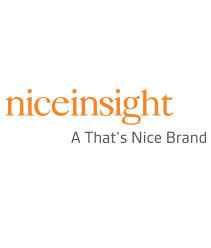May 15, 2012 LSL-M05-12-NI-001
These disparate information bases make standardization a challenge,
even in the days of mobile computing devices and the widespread use of technology.
Consequently, an industry known for innovation has been slow to shift entirely away
from paper when it comes to record keeping.
up roughly one-third of the market (31%), followed by Biotechs, which account for another 26%. According to Nice Insight survey respondents, these two groups spend upwards of $225M each year outsourcing data management. Catering to these customer groups is likely part of the challenge in shifting to a fully computerized platform for data management, considering the risks may not seem to outweigh the benefits in the eyes of sponsors. It makes sense to take a conservative attitude towards software solutions, considering how much easier it is to err when entering information onto a touchscreen or keyboard than it is when writing with a pen and paper. The pressure to reduce costs conflicts with concerns about data entry errors causing a trial—or worse a project — to be invalidated at a huge financial setback.
On the other hand, electronic data collection and management can be designed to help
reduce potential errors by building in alerts indicating when the information entered falls outside of an acceptable range. It can also significantly reduce set-up time for new studies because the standards will have already been established during the initial software set-up.
Nice Insight survey results indicate that the CROs allocated the largest market share for
data management services are businesses that have developed their own technology or
are using third party software to facilitate the process. The top five companies with respect to data management market share are: PharmaNet/i3, Covance, Quintiles, Parexel and ICON.
One of the greatest concerns that correspond with data management is whether electronic records (which lack a paper trail) will stand up to FDA scrutiny. As such, Nice Insight looked to see how the leading data management companies scored in regulatory compliance in comparison to the data management benchmark for regulatory as well as against the CRO regulatory benchmark. Among the top five, the averaged regulatory compliance score was 78%, which is 3% points higher than the data management benchmark and 4% points higher than CROs at large. This finding bodes well for sponsors who choose to outsource data management, as it may help alleviate the concern of mishandled information.

The leading data management companies also tended to excel in the productivity category, which should come as no surprise considering one of the major reasons to employ electronic data management is access to near real-time information across all trial sites. Among the leading data management companies, the averaged productivity score was 76% — 2% points higher than the data management benchmark and 3% higher than the CRO industry benchmark for productivity.
In addition to having better scores for regulatory compliance and productivity, the
businesses with the greatest market share for data management were perceived as
more affordable—with an averaged score 2% points higher than the data management benchmark for affordability as well as the CRO affordability benchmark, both of which
were 69%.
These companies illustrate how information technology may be integrated into data
management while positively impacting productivity and affordability customer perception scores, and at the same time, maintaining solid regulatory compliance scores. Optimistically, results like these will help pave the way to embracing technology; but, what may be more effective is if CROs come together in open collaboration to develop a standardized system. After all, cloud technology is the result of collaboration in the Information Technology industry.

Nice Insight, established in 2010, is the research division of That’s Nice, A Science Agency, providing data and analysis from proprietary annual surveys, custom primary qualitative and quantitative research as well as extensive secondary research. Current annual surveys include The Nice Insight Contract Development & Manufacturing (CDMO/CMO), Survey The Nice Insight Contract Research - Preclinical and Clinical (CRO) Survey, The Nice Insight Pharmaceutical Equipment Survey, and The Nice Insight Pharmaceutical Excipients Survey.